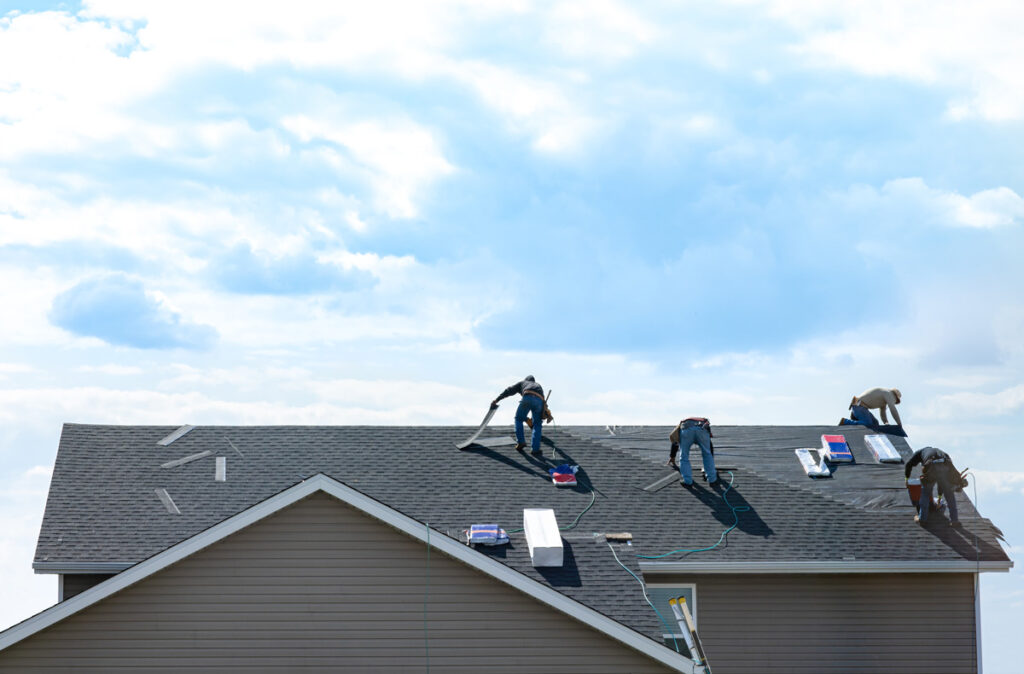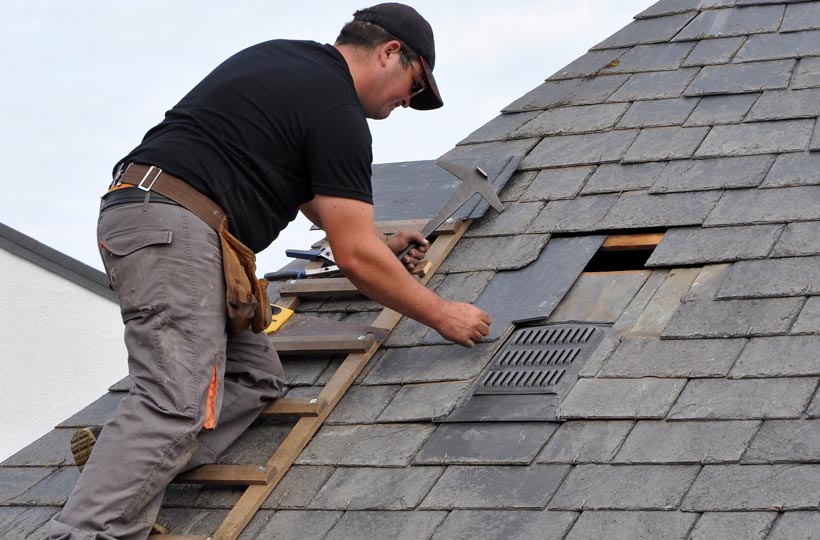Comprehending the Different Kinds Of Roofings: A Comprehensive Overview for Homeowners
In the world of homeownership, picking the appropriate roof style is a choice that brings substantial effects for both performance and aesthetic appeal. With a range of options-- ranging from the traditional gable to the contemporary flat-- each kind offers one-of-a-kind advantages and difficulties that ought to align with the property owner's particular requirements and ecological factors to consider. Comprehending these differences not just help in making an educated selection but also affects lasting upkeep and power effectiveness. As we check out the complexities of various roofing system types, it ends up being apparent that one dimension does not fit all; the best selection might shock you.
Gable Roofing Systems
Saddleback roofs, defined by their triangular form, are amongst one of the most preferred roofing designs as a result of their simplicity and efficiency in dropping water and snow. This style includes 2 sloping sides that meet at a ridge, permitting for efficient drain and reducing the risk of water build-up. The steep pitch commonly connected with gable roofing systems enhances their capability to take care of heavy precipitation, making them appropriate for different climates.
In addition to their functional advantages, saddleback roofs use aesthetic adaptability. They can be adjusted to various architectural designs, from standard to modern homes. The layout can likewise suit added attributes such as dormer windows, which improve all-natural light and air flow in the attic space.
Additionally, saddleback roofs offer enough room for insulation, adding to power effectiveness. Homeowners can pick from a range of roof products, including asphalt roof shingles, steel, and tiles, further enhancing personalization options.
In spite of their advantages, saddleback roofs might need added assistance in locations vulnerable to high winds or hefty snowfall. Generally, the gable roof covering remains a favored choice as a result of its mix of capability, resilience, and visual appeal.
Apartment Roofs
Flat roof coverings are commonly acknowledged for their minimalist layout and useful applications, especially in commercial and commercial setups (oahu roofing). These roofs include a straight or virtually straight surface area, which permits easy building and versatile room use. While they may lack the visual allure of pitched roofs, level roofing systems offer countless benefits, specifically in metropolitan environments where making best use of area is essential
Among the main benefits of flat roofs is their access. Property owners can utilize the roof room for various objectives, such as rooftop gardens, terraces, or photovoltaic panel installations. Additionally, level roofings are generally extra economical to set up and preserve contrasted to their sloped counterparts, as they need less materials and labor.
Typical materials utilized for flat roofing systems consist of built-up roof covering (BUR), modified asphalt, and single-ply membrane layers, each offering distinctive benefits. Generally, flat roofings serve as a practical and adaptable selection for numerous house owners and services alike.
Hip Roofing Systems
Hip roofings are defined by their sloped sides that assemble at the top, forming a ridge. This design stands out from gable roofing systems, as all four sides of a hip roof incline downwards towards the wall surfaces, giving a much more steady structure. The angle of the inclines can my blog differ, enabling adaptability in architectural aesthetic appeals and performance.
One of the primary advantages of hip roof coverings is their capacity to endure heavy winds and negative weather problems. The sloped surfaces allow better water drain, minimizing the danger of leakages and water damages. Furthermore, hip roofing systems offer raised attic room, which can be made use of for storage space and even exchanged comfortable areas.
Nonetheless, creating a hip roof can be more complex and expensive than simpler roofing system types, such as gable roof coverings. The extra product and labor associated with producing the inclines and making sure proper architectural integrity can bring about greater costs. Despite these disadvantages, several property owners prefer hip roofing systems for their sturdiness, aesthetic appeal, and capacity for energy efficiency.
Mansard Roofings
Mansard roofing systems, frequently acknowledged by their distinct four-sided layout, attribute two inclines on each side, with the reduced incline being steeper than the top. This building design, originating from France in the 17th century, is not only visually enticing however practical, as it maximizes the usable area in the upper floorings of a structure. The steep lower slope allows for even more headroom, making it an optimal choice for attics or lofts, which can be transformed right into living rooms.
Mansard roofs are defined by their convenience, suiting different architectural designs, from conventional to modern. They can be created with various materials, consisting of asphalt roof shingles, slate, or metal, offering house owners with a series of choices to fit their preferences and budget plans. Additionally, the design enables the integration of dormer windows, boosting all-natural light and ventilation in the upper levels.
Nevertheless, it is important to consider the prospective drawbacks. Mansard roofs might need more upkeep due to the intricacy of their layout, and their steep inclines can be testing for snow and rain drainage. Generally, mansard roofs incorporate beauty with practicality, making them a popular choice among house owners seeking unique architectural functions.
Shed Roofing Systems
As home owners significantly seek simplicity and functionality in their building layouts, dropped roof coverings have become a popular choice. Defined by a single sloping airplane, a shed roof provides a minimalist visual that complements various home designs, from modern to rustic.
Among the main advantages of a shed roof covering is its simple building, which often translates to lower labor and product costs. This design permits for effective water drainage, decreasing the risk of leakages and water damage. Furthermore, the vertical slope offers ample space for skylights, enhancing natural light within the interior.
Lost roofs have a peek at this website likewise offer adaptability in regards to usage. They can be successfully incorporated into additions, garages, or exterior frameworks like sheds and structures. Additionally, this roofing system design can accommodate different roof products, consisting of metal, asphalt shingles, and even green roof coverings, aligning with green campaigns.
However, it is important to think about regional environment conditions, as heavy snow tons might demand adjustments to the roof's angle or structure. Overall, lost roof coverings provide a functional and visually pleasing option for home owners looking to take full advantage of capability without endangering design.
Conclusion


Gable roofing systems, identified by their triangular shape, are among the most popular roof covering styles due to their simplicity and performance in shedding water and snow. oahu roofing. The steep pitch frequently linked with gable roofing systems boosts their ability to deal with hefty rainfall, making them ideal for different environments
While they might do not have the visual appeal of pitched roofing systems, level roofs provide many benefits, specifically in urban environments where taking full advantage of area is critical.
